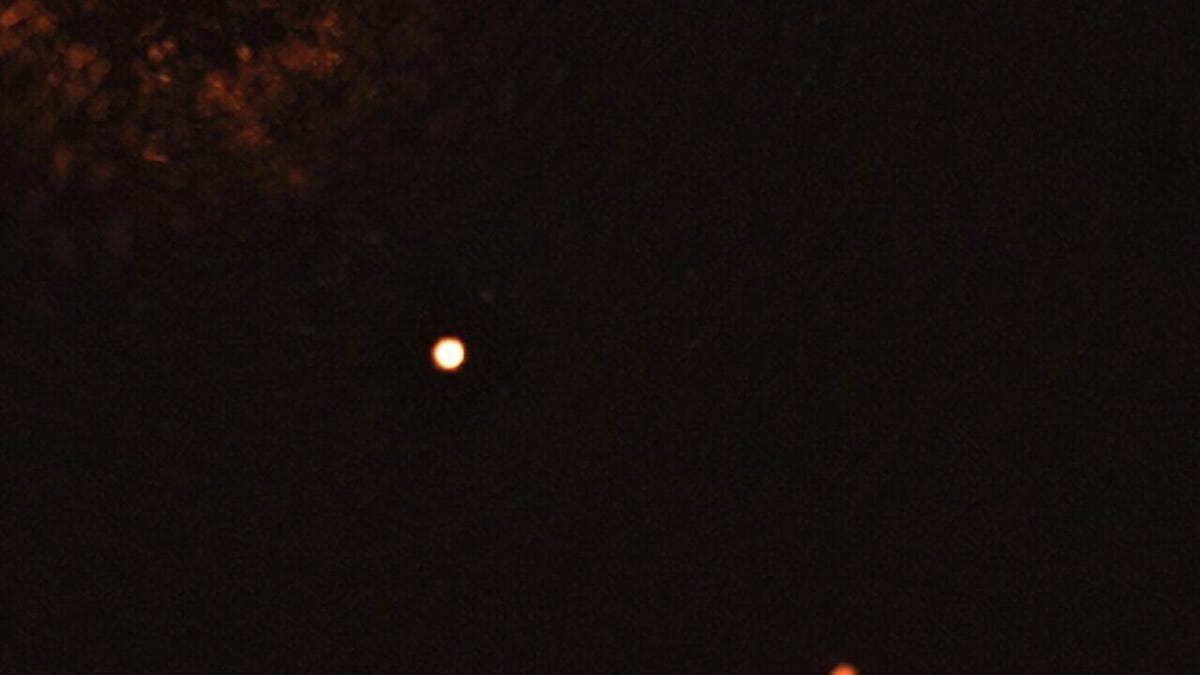Astronomers capture first images of multiplanet system around sunlike star
The European Southern Observatory's Very Large Telescope finds two giant planets orbiting a distant star that's just like our sun.

TYC 8998-760-1 (top left) and two giant exoplanets orbiting the sunlike star.
About 300 light-years from Earth lies TYC 8998-760-1, a star that resembles our own sun, kind of like a twin, but born around four and a half billion years later. In May, a team of astronomers studying the sunlike star discovered it wasn't alone -- a giant gas planet was keeping it company on its voyage through the cosmos. They dubbed it TYC 8998-760-1, as convention dictates.
Now, just two months later, the same team has discovered another planet, even farther away from the star, dubbed TYC 8998-760-1 c.
The discovery, published in the Astrophysical Journal Letters on Wednesday, is a significant one for planet hunters: It's the first time multiple planets have been directly imaged orbiting a star similar to our sun.
"Our team has now been able to take the first image of two gas giant companions that are orbiting a young, solar analogue," said Maddalena Reggiani, an astronomer at KU Leuven in Belgium and co-author on the study.
For the everyday skywatcher, what does that mean?
Well, first of all, directly imaging exoplanets is tricky work. The majority of these distant worlds are detected indirectly. Astronomers don't actually see the planet in visible light, but they can tell it's there by its effects on bright stars. Some telescopes, like NASA's TESS, look for dips in the brightness of stars, suggesting a planet has crossed the field of view. Other planet hunters look for distinct changes in the velocity of stars, caused by the gravitational effect of an unseen world. Both methods have helped astronomers locate a huge trove of exoplanets.
There are rare occasions, however, when telescopes can see the planets directly, which is how the planets around TYC 8998-760-1 were spotted. It's hard to directly image planets because they don't give off a ton of light. Plus, the closer they are to their home sun, the more that sun obscures them in the sky. But using the Very Large Telescope in Chile's Atacama desert and the SPHERE instrument attached to it, planet hunters can block out the light -- and detect planets nearby.
That's how TYC 8998-760-1 c was found.
It's not the first time astronomers have seen multiple planets orbiting a star. That honor goes to HR 8799. Researchers using the W.M. Keck Observatory and the Gemini Observatory at Mauna Kea in Hawaii spotted three planets orbiting HR 8799 in 2008. But HR 8799 is a weird type of star that lacks heavy metals -- it's nothing like our sun.
TYC 8998-760-1, however, is like our sun. It resembles a very (very) young version of our own sun, and the two planets resemble supersized versions of our own gas giants, Jupiter and Saturn .
"This discovery is a snapshot of an environment that is very similar to our Solar System, but at a much earlier stage of its evolution," said Alexander Bohn, an astronomer at Leiden University in the Netherlands who led the study, in a statement.
The closest planet, discovered in May, is around 14 times as massive as Jupiter, while TYC 8998-760-1 c is around six times as massive. But the planets are much further away from their host star. The distance to planet b is around 160 au, or astronomical units -- making it 160 times bigger than the distance between the Earth and the sun. Planet c is double that distance.
Former planet Pluto, at the edge of our solar system, only lies at 40 au.
The European Southern Observatory, which operates the Very Large Telescope, is constructing a brand-new eye for the sky, with the imaginative name of the "Extremely Large Telescope." Seriously. The new telescope is scheduled to come online sometime in 2025 and will provide astronomers with an even clearer look at TYC 8998-760-1. And if there are other planets lurking unseen in the system, it's the ELT that could help discover them.
There's also NASA's infinitely delayed James Webb Telescope, which could probe the system in different wavelengths and should help determine the kinds of atmospheres of the giant exoplanets.

